Sharing 95.6% of their DNA with tigers, domestic cats (Felis sylvestris domesticus) are second only to dogs as the U.S.’s pet of choice, making one out of every three people in the U.S. a cat owner, and most of them owning more than one cat—that’s 86 million cats! (The feral population is estimated at an additional 60 million cats.)
Archaeological evidence of cat cohabitation goes back 9,500 years, the oldest being a human grave also containing a young cat at the site Shillourokambos on the island of Cyprus, but cats may have begun integrating into human society even earlier. Genetic analyses indicate that the domestic cat lineage split off from its wild ancestor about 12,000 years ago in the Fertile Crescent—right around the time and place that humans took to farming. Cats may have first cohabitated with humans to exploit the rodents feeding on stored grain, fostering a mutually beneficial relationship. In essence, it appears that cats “domesticated themselves”—although whether cats qualify as truly domesticated is debated.
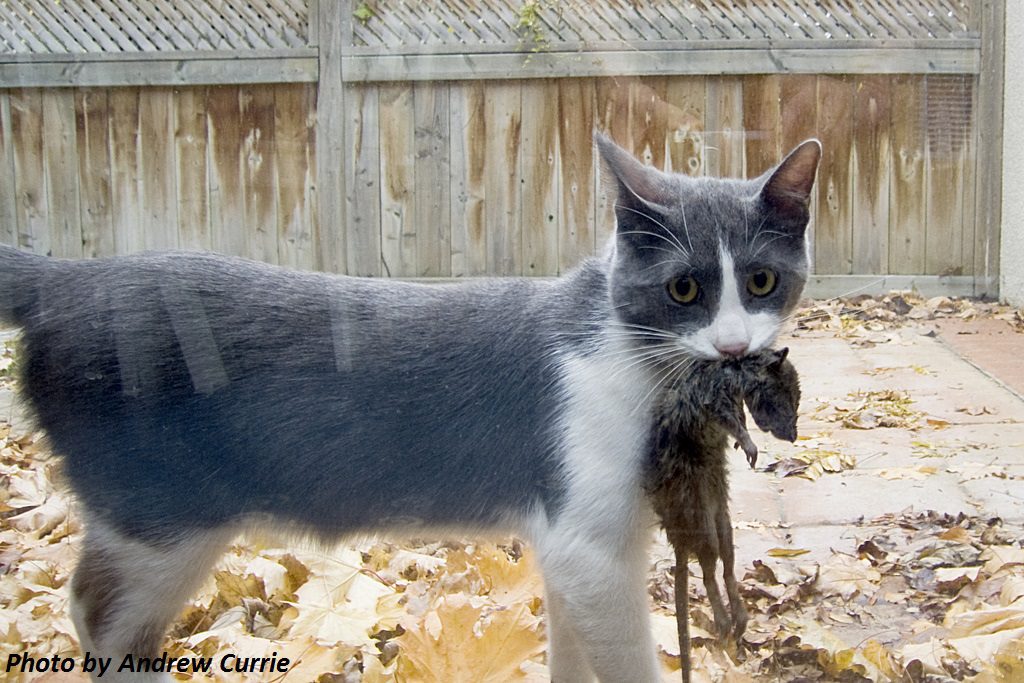
This cat is owned by Flickr user Andrew Currie, who initially struggled with the decision to let his cat roam outside and ultimately decided to do so.
Since then, cats through time have been both revered and persecuted by their human counterparts. Early Egyptian, Roman, and Eastern cultures deified them, but cats were vilified as messengers of evil in Europe during the Middle Ages. Alongside poor sanitation, the direct lethal persecution of cats contributed to the spread of the Black Death, as it allowed the disease-carrying rat population to explode. Today, the cat is touted as one of the reasons the internet exists.
The cat’s recent surge in popularity has resulted in another, unintended consequence: the decimation and extinction of native wildlife. A 2011 study found that cats have contributed to the listing of at least 38 endangered vertebrate species on islands, and the extinction of at least 33 more. (These numbers only include the species that we know about.)
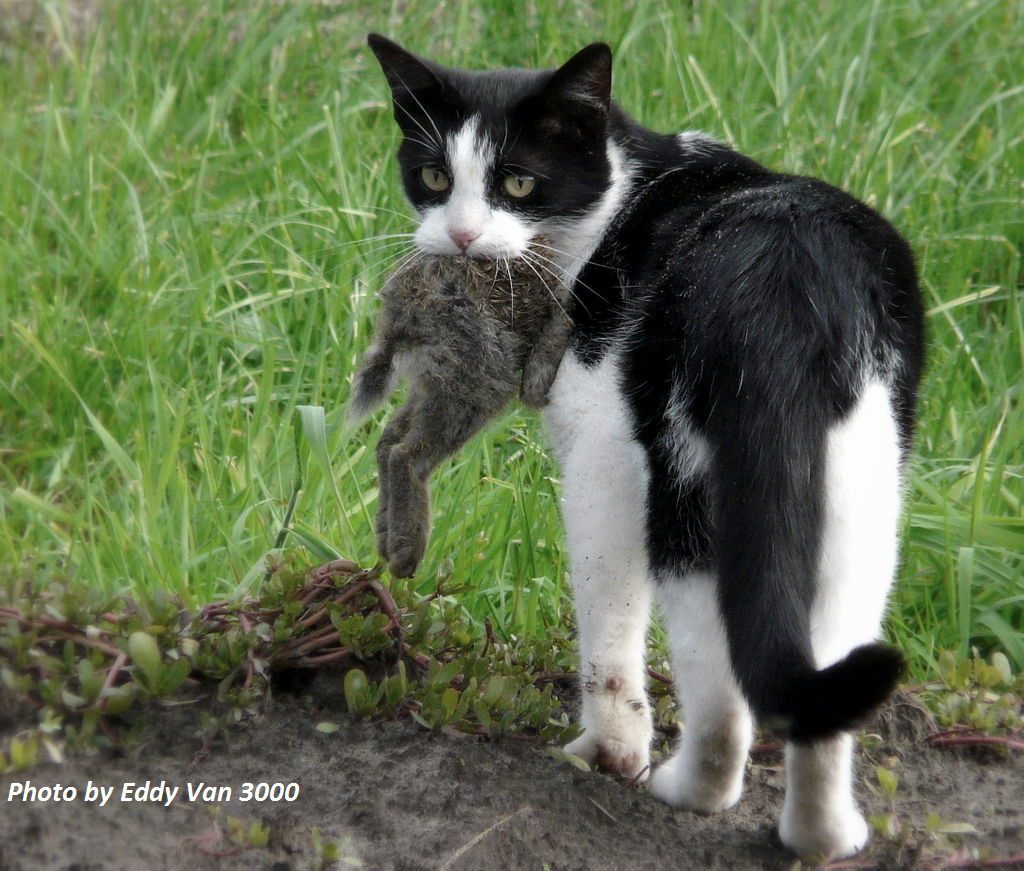
This cat in Belgium has predated a young rabbit.
Famously, a single cat named Tibbles, owned by a New Zealand lighthouse keeper, is credited with driving the Stephen’s Island Wren to extinction in 1894. However, scrutiny of reports dated 1895 indicate the island was “swarming with cats”, and that once numerous endemic bird species were scarce or absent, suggesting Tibbles did not act alone. By 1897, the principal lighthouse keeper commented that something ought to be done about the cats, and a bounty was enacted—but not soon enough. Although several specimens collected after 1894 indicate Tibbles did not bring home the very last Stephens Island Wren, it’s clear that she and her brethren played a central role in driving the population below a sustainable threshold.
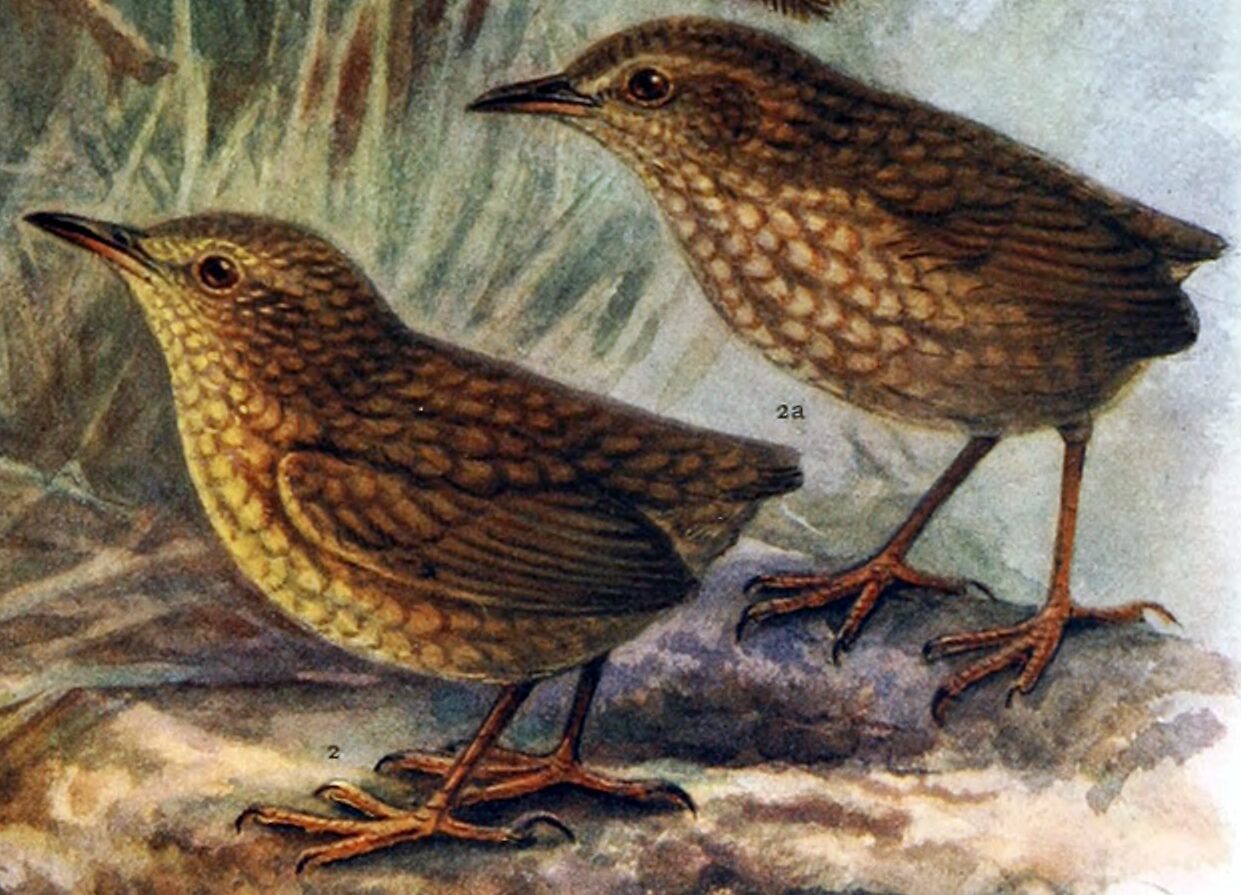
A watercolor illustration of two Stephens Islands Wrens, based on eyewitness accounts and preserved specimens.
A study released last year implicates cats in 63 extinctions worldwide, or 26 percent of all reptile, bird, and mammal extinctions during the Anthropocene (“the Age of Humans”). Many cat owners can attest to the hunting prowess of their companions by the “gifts” they present—from rodents, moles, rabbits, bats, and birds, to lizards, small snakes, and even frogs.
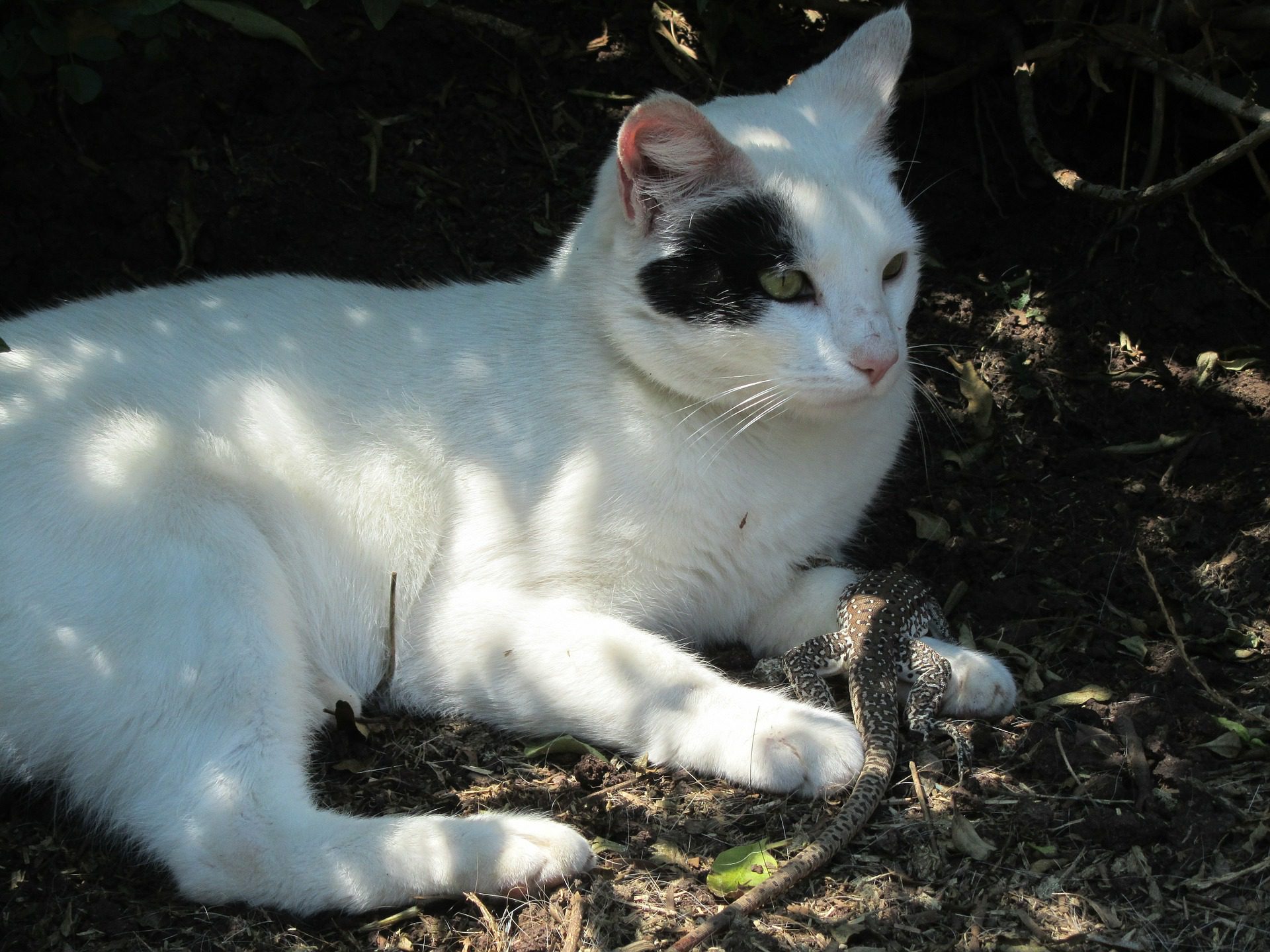
This kitty has captured and killed a large lizard.
The famous “KittyCam” study conducted by the University of Georgia documented cat behaviors by attaching tiny cameras to the collars of suburban felines. Hours of footage from these cameras revealed that they routinely not only captured and killed chipmunks, birds, amphibians and reptiles, but also engaged in a variety of risky behaviors such as darting in front of moving vehicles, drinking unidentified fluids, exploring in storm drains, and confronting raccoons, opossums, dogs, and other cats. The footage also revealed that half of these cats had a propensity for killing for fun–only a quarter of what they killed was actually eaten, and the “gifts” presented to their humans represented only 23% of what these pampered, well fed pets killed. (The results of the study are brilliantly summarized by “The Oatmeal” artist Matthew Inman here.)
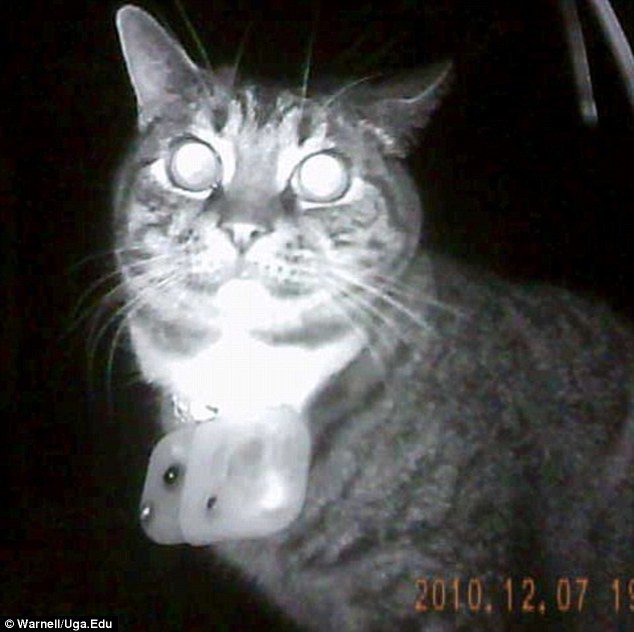
KittyCam study subject as photographed by another subject’s collar camera.
The implications of these studies are that our furry companions, once guardians of our ancient grain stores, have targeted the prey available to them now: our native wildlife. Cats will attempt to predate anything smaller, but the impact on birds is particularly well studied.
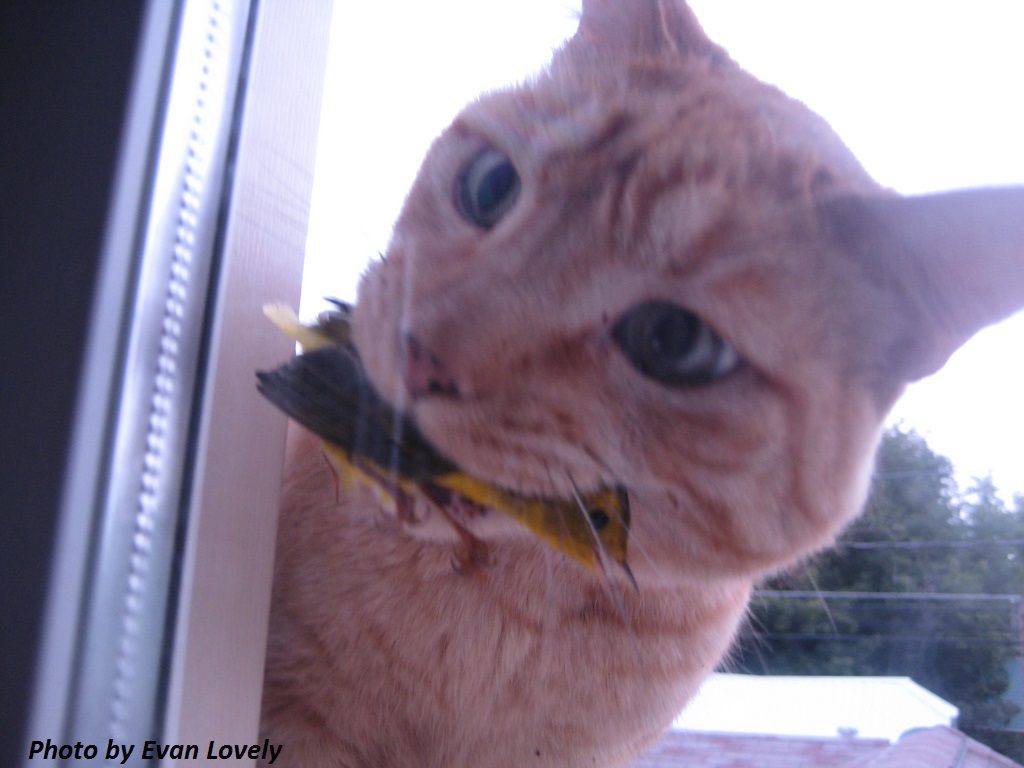
This ginger cat has a Wilson’s Warbler (Cardellina pusilla) in its mouth
The mammalian toll is much higher—ranging from 6.9 billion to 20.7 billion kills annually. In countries where native and endemic wildlife is a source of national pride—such as Australia and New Zealand—controlling feral cat populations via trapping and euthanasia is a more accepted practice than it is in the United States. In addition, ownership of pet cats is more tightly regulated in Australia, where microchipping is required in some states.
Feral cats pose a risk not only to biodiversity, but to human health—as vectors of disease including rabies and toxoplasmosis—and live short, stressful, unhealthy lives. Feral cats fare best when rehabilitated and rehomed, or placed in a sanctuary. Trap-neuter-release (TNR) programs are “resource intensive activities” that are “challenging to sustain” over the long term, and have little effect feral cat populations without accompanying public education. TNR actually encourages people to inhumanely dump more unwanted cats into the environment, rather than responsibly surrendering them to a sanctuary or adoption agency. TNR cats, of course, continue to kill native wildlife regardless of their reproductive status.
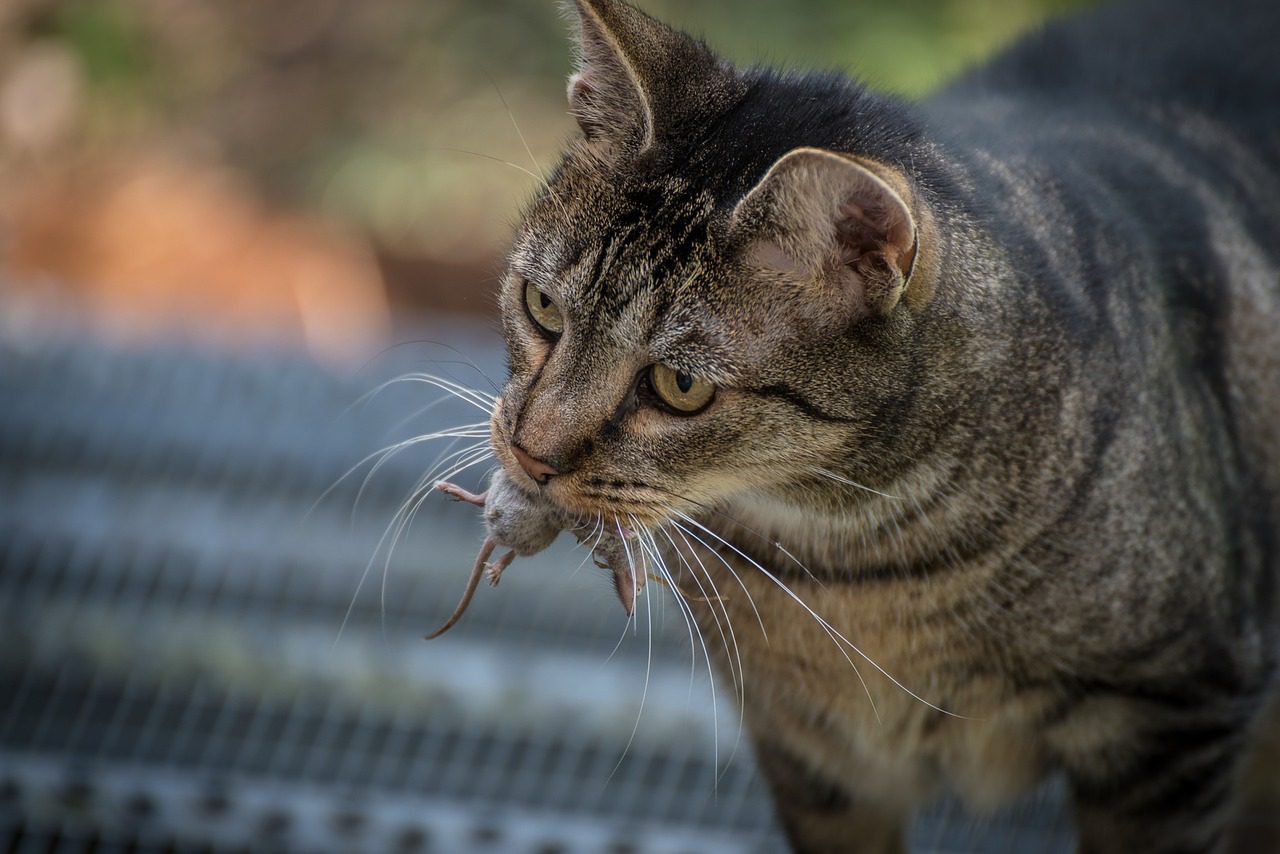
This tabby cat is holding a shrew in its mouth.
Cats need not be vilified for carrying out instinctive hunting behaviors, which persist even when cats are well fed and cared for. Instead, it lies on their human companions to bear the responsibility of protecting our unique native wildlife from extinction, as well as our beloved companions from untimely deaths due to car collisions, encounters with other animals, or the diseases that infect them as well as us.
Keeping cats indoors full time is the best solution, although any reduction or increased supervision of outdoor time is helpful. Dr. Marra, himself a cat owner, proposes that owned cats be treated the same as owned canines—licensed, leashed, enclosed, and safely supervised.
Many cat owners insist that keeping their cats indoors is a cruel and unethical practice tantamount to imprisonment. I would urge them to consider that exposing their pets to unnecessary health risks and allowing a non-native predator to indiscriminately decimate local wildlife populations is the greater ethical problem.